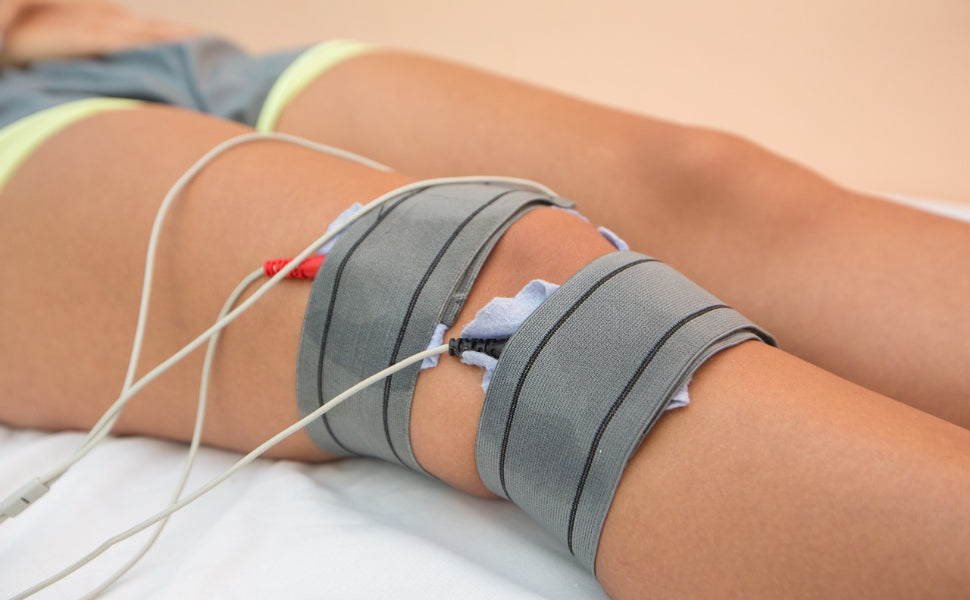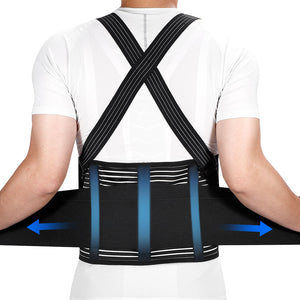How to Get Rid of Fluid on the Knee?

Do you suffer from the pain of knee fluid buildup? Fluid buildup in the knee is a widespread articular problem that often causes discomfort and in serious cases can even limit daily activities. This article discusses how to deal with knee fluid accumulation. Explore practical ways to reduce pain, decrease swelling and recover ambulation. Allowing you to recover control of your knee health and overall quality of life. Let's read along with Fivali!
Causes of Knee Fluid Buildup
A variety of reasons might contribute to knee fluid buildup. Following are the few examples of common causes:
- Injury: The fluid accumulation can be contributed to by sprains, pulls, or directly contact with the knee, which is the body's natural reaction to inflammation.
- Arthritis: Osteoarthritis and rheumatoid arthritis induce continuous inflammation of the knee joint, which results in greater slippery fluid production from it.
- Infection: While uncommon, bacterial or viral infections in the knee joint are a significant cause of knee effusion.
- Gout: The buildup of uric acid crystals in the bones of the joints can lead to swelling and effusion, which can lead to arthritis, a disease known as gout.
- Bursitis: The inflamed synovial fluid sacs which surround the knee joint can cause fluid to build up, causing swelling and discomfort.
- Overuse or Strain: Repeated abrasion and excessive weight loading of the knee joint can induce inflammation, which in turn creates joint effusion to arise from it.
- Torn Ligaments or Meniscus: Knee ligament or meniscus injuries can cause inflammation and the discharge of synovial fluid to erupt.
- Underlying Medical Diseases: As part of their systemic consequences, certain medical diseases, such as lupus or certain forms of cancer, may cause fluid to build up in the knee joints.
- Inflammatory Disorders: Gout, pseudogout and synovitis are conditions that can lead for swelling and inflammation of the knee joint.
- Hemarthrosis: Under rare circumstances, hemorrhage in the knee (usually resulting from a bleeding disorder or trauma) can lead to a fluid buildup.
There are various causes of knee joint effusion, so we recommend that you consult your doctor in time for examination and therapy under the instruction of a medical professional.
Conservative Treatment Options
Following are some examples of commonly applied conservative practices:
- Rest: Refrain from strenuous sports and load bearing as they allow the knee to have healed.
- Elevation: The elevation of the affected knee over heart level would help to stimulate blood movement as well as lessen edema.
- Ice: Regular ice packs help reduce knee pain and quickly reduce swelling. It is suggested that applying an ice pack to the kneecap for 15-20 minutes at intervals of 2-3 hours is encouraged. To preserve the skin, please wrap up the ice pack with a thin fabric or towel by using the ice pack.
- Compression: Elastic bandages or knee brace will either provide support and help control edema. Taking care not to wrap it too closely.
- Nonprescription Pain Relievers: Over-the-counter pain medicines such as ibuprofen or acetaminophen helps control pain and inflammation. If you have any questions about your prescription dosage, talk to your doctor.
- Physical Therapy: Physical therapists can deliver exercises to strengthen the muscles which surround the knee, improve mobility and reduce pain.
- Weight Management: Maintaining a healthier weight effectively reduces the pressure on the knee joint, not only preventing fluid buildup, as well as mitigating pre-existing complaints as they occur.
- Use of Assistive Devices: If necessary, a cane or crutches can help you lose weight while your damaged knee heals.
Before you begin any treatment program, being sure to consult with your doctor. Fluid buildup in the knee can have a variety of causes, and only your doctor can determine the best treatment for you through a professional diagnosis. A personalized healing plan will be drawn up by them to suit your specific situation as well as follow your rehabilitation progress throughout the process.
Medications
Medications can help manage knee fluid buildup (knee effusion) by addressing pain, inflammation, and underlying causes. The following are some common drugs used to treat knee effusion:
- Nonsteroidal anti-inflammatory drugs (NSAIDs): A nonsteroidal anti-inflammatory drug such as either ibuprofen, naproxen, or aspirin can relieve the discomfort and inflammation resulting from a buildup of fluid in the knee joint. They are available without a prescription as well as over-the-counter.
- Prescription Pain Medications: For serious pain, a healthcare professional will sometimes prescribed strong painkillers, such as opioids. Since they are addictive substances and potentially cause a range of side effects, however, opioids are usually recommended only for short-term use to limit pain.
- Corticosteroids: Injecting the corticosteroid directly within the knee joint can deliver appreciable comfort by reducing inflammation. When inflammation is a substantial part of the fluid buildup, corticosteroids are especially useful.
- Viscosupplementation: With this procedure, hyaluronic acid, a sticky gel-like substance, is administered by injecting it to smooth and provide a cushioned knee joint, which provides intense pain control and dramatically enhances the knee's range of motion. It is frequently used to treat osteoarthritic knee effusion.
- Antibiotics: If the knee effusion is being caused by a bacterial infection, antibiotics will be used to treat the underlying infection.
- Medications for Underlying Conditions: If an underlying medical condition, such as gout or rheumatoid arthritis, is contributing to the knee effusion, particular medications to control that condition will be prescribed.
- Medication for Bleeding Disorders: Medication for bleeding disorders may be prescribed if there is bleeding from the blood channels (bleeding into the joints).
When taking pharmaceuticals, especially prescription medications, it is critical to follow your healthcare provider's instructions. Discuss any concerns you have, as well as potential adverse effects and interactions with other medications.
Prevention
Following are several preventions that are worth being considered here:
- Exercise and Strengthening: Low-intensity exercise such as cycling, swimming or walking not only enhances the muscles around the knee joint, but also effectively stabilizes the joint as well as affording better protection for the joint.
- Warm Up: Warm up is an obligatory part of pre-workout, by which you can mobilize your muscles and raised your body's core temperatures to be ready for the exercise that follows.
- Keep a Healthy Weight: Adopting a healthy weight takes strain from the knee joints and reduces the likelihood of knee problems and fluid buildup.
- Diet: Consuming a healthy, balanced diet high in fruits, vegetables, whole grains, and lean meats will help you maintain your weight and improve the condition of all your joints.
- Protective Equipment: It is effective injury prevention to put on suitable protective equipment (e.g., knee braces, knee supports) while performing high-risk knee activities.
- Adequate Hydration: Sufficient fluid intake is effective in retaining healthy knee articular cartilage and gliding fluid in a healthy condition.
- Proper Footwear: With well supported shoes, you can effectively part the pressure on your knee joints and protect the health of your knees.
- Regular checks: Regular professional checkups at the hospital are especially important for people with knee problems. The doctor can provide you with help in understanding the health of your knees and advise you on professional therapy of the condition.
- Overexertion: By avoiding activities that places too much strain on the knees, especially if you have a family history of knee disease.
You may help lower the likelihood of knee fluid development and preserve good knee health by implementing these preventive steps into your lifestyle.
Reference
Swollen knee - Diagnosis & treatment - Mayo Clinic
Fluid on the Knee Causes and Treatments
Knee Swelling Begone! 8 Effective Home Remedies You Can Try Today - YouTube
-
Posted in
Healthy Lifestyle, Joint, Recovery













